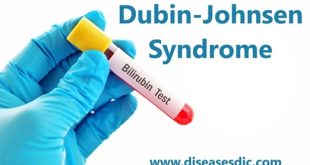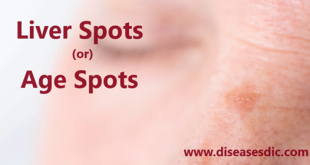What is Dermatitis Herpetiformis?
Dermatitis herpetiformis (DH) is a bumpy, itchy skin rash that’s common in people with celiac disease. That’s an autoimmune disorder that keeps your body from digesting gluten, a protein found in wheat and other grains. DH, also known as Duhring’s disease, causes blisters that look like herpes, but the condition doesn’t come from the herpes virus. It’s linked to gluten sensitivity.
Pathophysiology of DH
Dermatitis herpetiformis is the result of an immunologic response to chronic stimulation of the gut mucosa by dietary gluten. It is a complex disease of the skin caused by the deposition of IgA in the papillary dermis; this triggers an immunologic cascade resulting in neutrophil recruitment, complement activation, and a variety of other immunologic responses.
An underlying genetic predisposition to the development of dermatitis herpetiformis has been demonstrated. Both dermatitis herpetiformis and celiac disease (CD) are associated with an increased expression of HLA-A1, HLA-B8, HLA-DR3, and HLA-DQ2/DQ8 haplotypes. Environmental factors are also important; monozygotic twins may have dermatitis herpetiformis, celiac disease, and/or gluten-sensitive enteropathy with variable symptomatology.
The leading theory for DH is that a genetic predisposition for gluten sensitivity, coupled with a diet high in gluten, leads to the formation of IgA antibodies against gluten-tissue transglutaminase (t-TG), which is found in the gut. These antibodies cross-react with epidermal transglutaminase (e-TG) which is highly homologous with t-TG. Serum from patients with gluten-sensitive enteropathy, with or without skin disease, contains IgA antibodies to both skin and gut types. Deposition of IgA and e-TG complexes in the papillary dermis cause the lesions of dermatitis herpetiformis.
What causes dermatitis herpetiformis?
- Dermatitis herpetiformis and coeliac disease are due to intolerance to the gliadin fraction of gluten found in wheat, rye and barley.
- Gluten triggers production of IgA antibodies and an autoimmune process that targets the skin and gut.
- In coeliac disease, gluten causes intestinal inflammation resulting in diarrhoea, tiredness, weight loss and abdominal discomfort.
- The majority (> 90%) of patients with DH also have gluten-sensitive enteropathy. Gastrointestinal symptoms may be mild to severe; some patients remain symptom-free.
- Around 15–25% of coeliac patients have concurrent dermatitis herpetiformis. These patients tend to have a more severe intestinal pathology in comparison to those without dermatitis herpetiformis.
Risk factors for DH
- Northern European ancestry
- Age 30 to 60
- Male
- Additional condition, including:
- Type 1 diabetes
- Autoimmune thyroid disease
- Sjögren syndrome
- Lupus
Symptoms
The symptoms of DH vary for different people, so not everyone may experience all symptoms. Typically, it affects three areas of the body — the skin, the gastrointestinal (GI) tract, and the mouth.
The skin
The most common effects of DH appear on the skin, with symptoms such as itchy blisters and raised clusters of lesions.
Commonly, areas that DH affects include elbows, knees, buttocks, and scalp. It may also affect the face and groin.
Many people feel an intense need to scratch itchy or burning areas.
The GI tract
Stomach inflammation and damage to the small intestine are common reactions in people with gluten sensitivity. These reactions usually develop a few days after a person ingests gluten.
People with DH may notice uncomfortable symptoms such as:
- Abdominal bloating
- Cramping
- Pain
- Diarrhea or constipation
The mouth
Some people develop problems with their tooth enamel, for example, horizontal grooves or discoloration.
Rarely, DH can also lead to oral ulcerations and canker sores.
What are the complications of dermatitis herpetiformis?
People with untreated DH and celiac disease may have a higher risk of intestinal cancer due to the constant inflammation in the intestines. Vitamin deficiencies and anemia may also be a problem if the intestines aren’t absorbing nutrients properly.
Since DH is an autoimmune disease, researchers have found that it’s also associated with various other types of autoimmune diseases. These include:
- Hypothyroidism
- Vitiligo
- Type 1 diabetes mellitus
- Myasthenia gravis
- Sjögren’s syndrome
- Rheumatoid arthritis
How is dermatitis herpetiformis diagnosed? What tests are done?
After examining your bumps and blisters, your healthcare provider may do a skin biopsy and/or blood test to see if you have dermatitis herpetiformis. The tests will help determine if you have this type of dermatitis or a different skin disorder.
Skin biopsy. Your healthcare provider may take a sample or two of your skin to check for evidence of dermatitis herpetiformis.
Blood test. There are two antibodies commonly found in people with celiac disease: anti-endomysial and anti-tissue transglutaminase. If you test positive for these antibodies, and if your skin biopsy confirms dermatitis herpetiformis, then you likely have celiac disease. (Some people need to have an intestinal biopsy to confirm celiac disease.)
What is the treatment for dermatitis herpetiformis?
Gluten-free diet
Gluten-free diet for life is strongly recommended in patients with dermatitis herpetiformis, as it:
- Reduces the requirement for medication to control DH
- Improves associated gluten-sensitive enteropathy
- Enhances nutrition and bone density
- May reduce the risk of developing other autoimmune conditions
- May reduce the risk of intestinal lymphoma
Medication
Dapsone is the treatment of choice for dermatitis herpetiformis, as it usually reduces itch within 3 days.
- Dose varies from 25 mg to 300 mg daily
- Dapsone has potential side effects and monitoring requirements
- It may be gradually weaned off in those who have been on a stable gluten-free diet
If intolerant or allergic to dapsone, the following may be useful:
- Ultra-potent topical steroids
- Systemic steroids
- Sulfapyridine (not available in New Zealand)
- Rituximab
Can dermatitis herpetiformis be prevented?
There is no known way to prevent this disease. You may be able to prevent complications by avoiding foods that contain gluten. Although difficult, sticking to a gluten-free diet can reduce the amount of medicines needed to manage the disease.
 Diseases Treatments Dictionary This is complete solution to read all diseases treatments Which covers Prevention, Causes, Symptoms, Medical Terms, Drugs, Prescription, Natural Remedies with cures and Treatments. Most of the common diseases were listed in names, split with categories.
Diseases Treatments Dictionary This is complete solution to read all diseases treatments Which covers Prevention, Causes, Symptoms, Medical Terms, Drugs, Prescription, Natural Remedies with cures and Treatments. Most of the common diseases were listed in names, split with categories.







